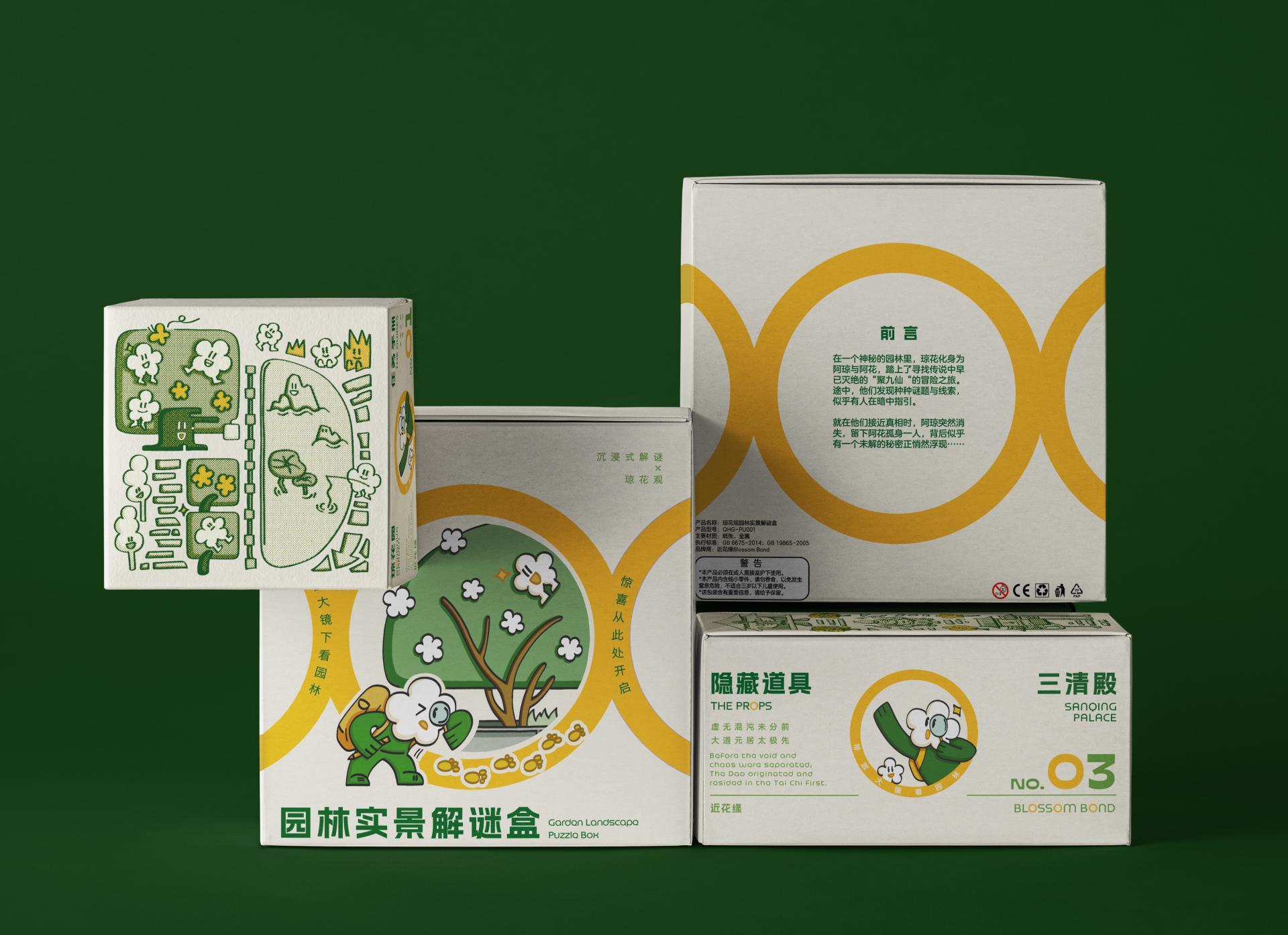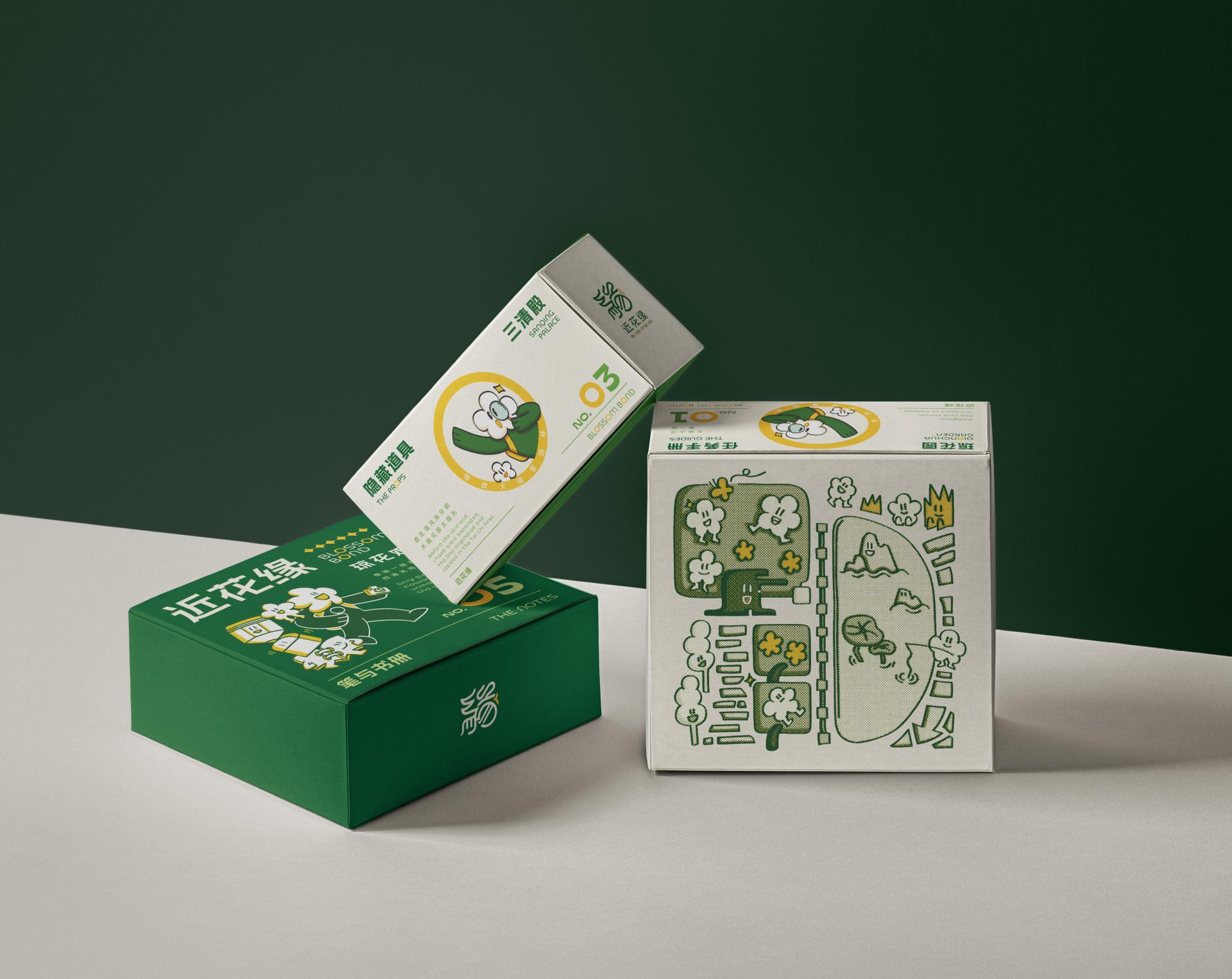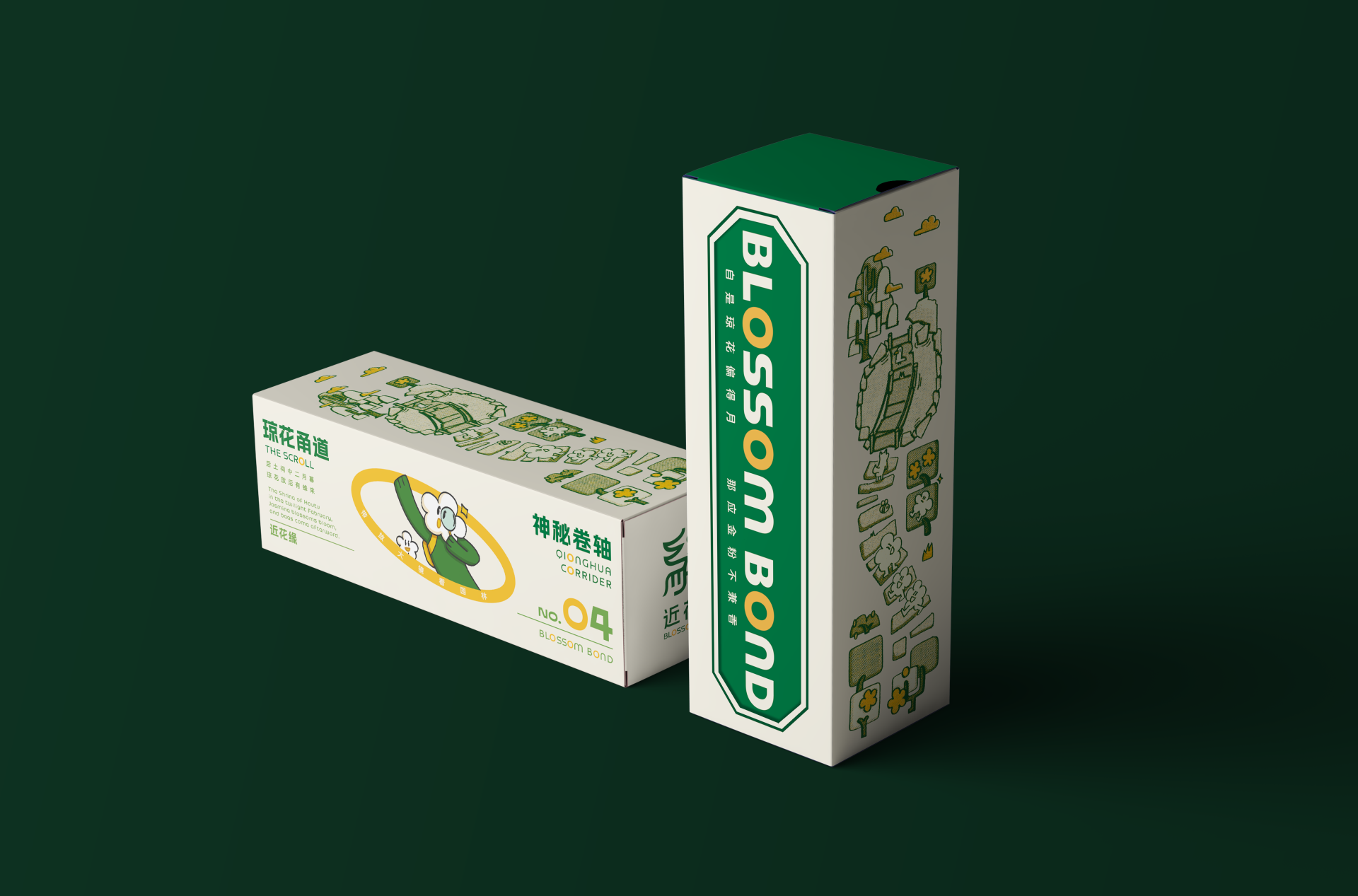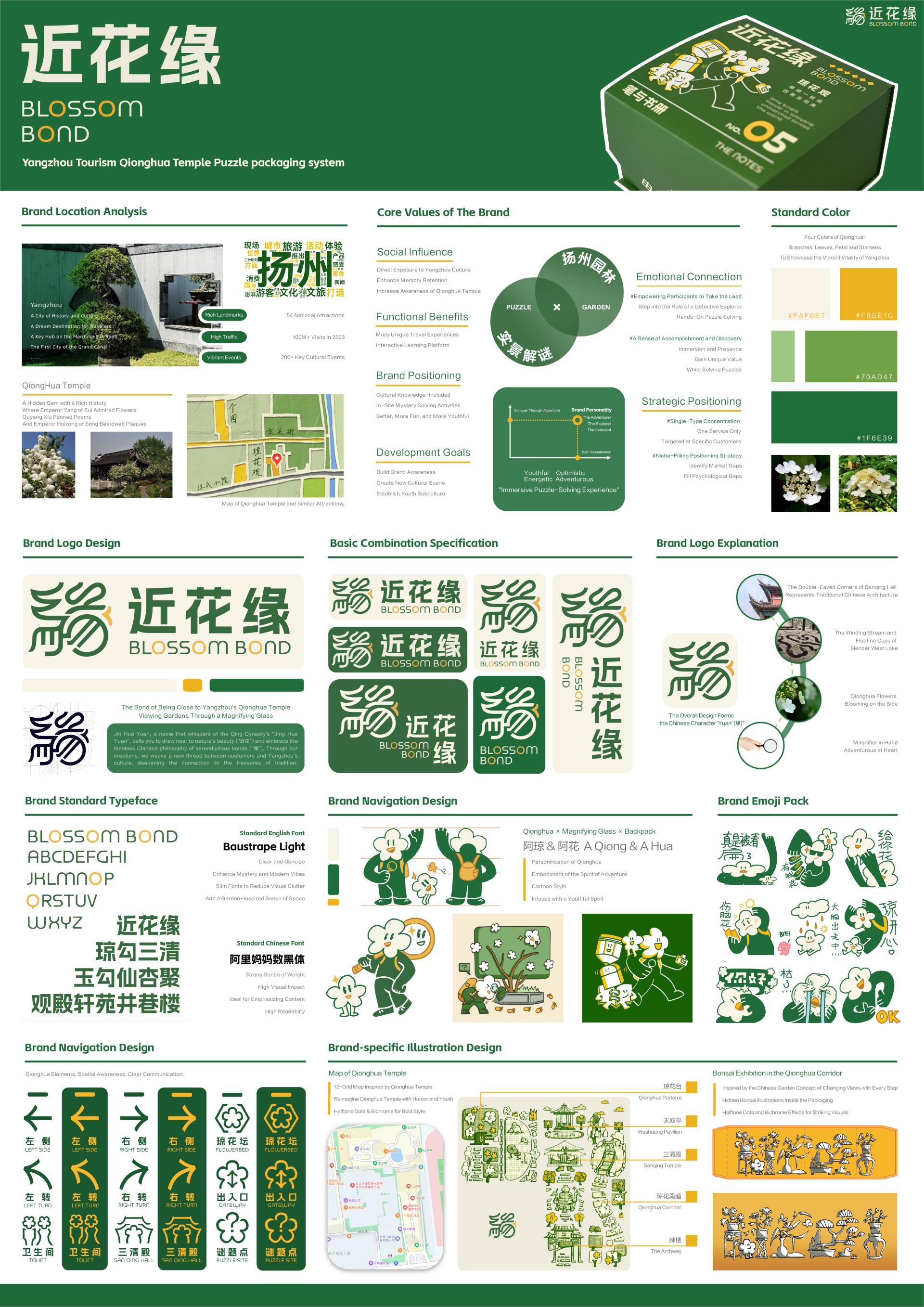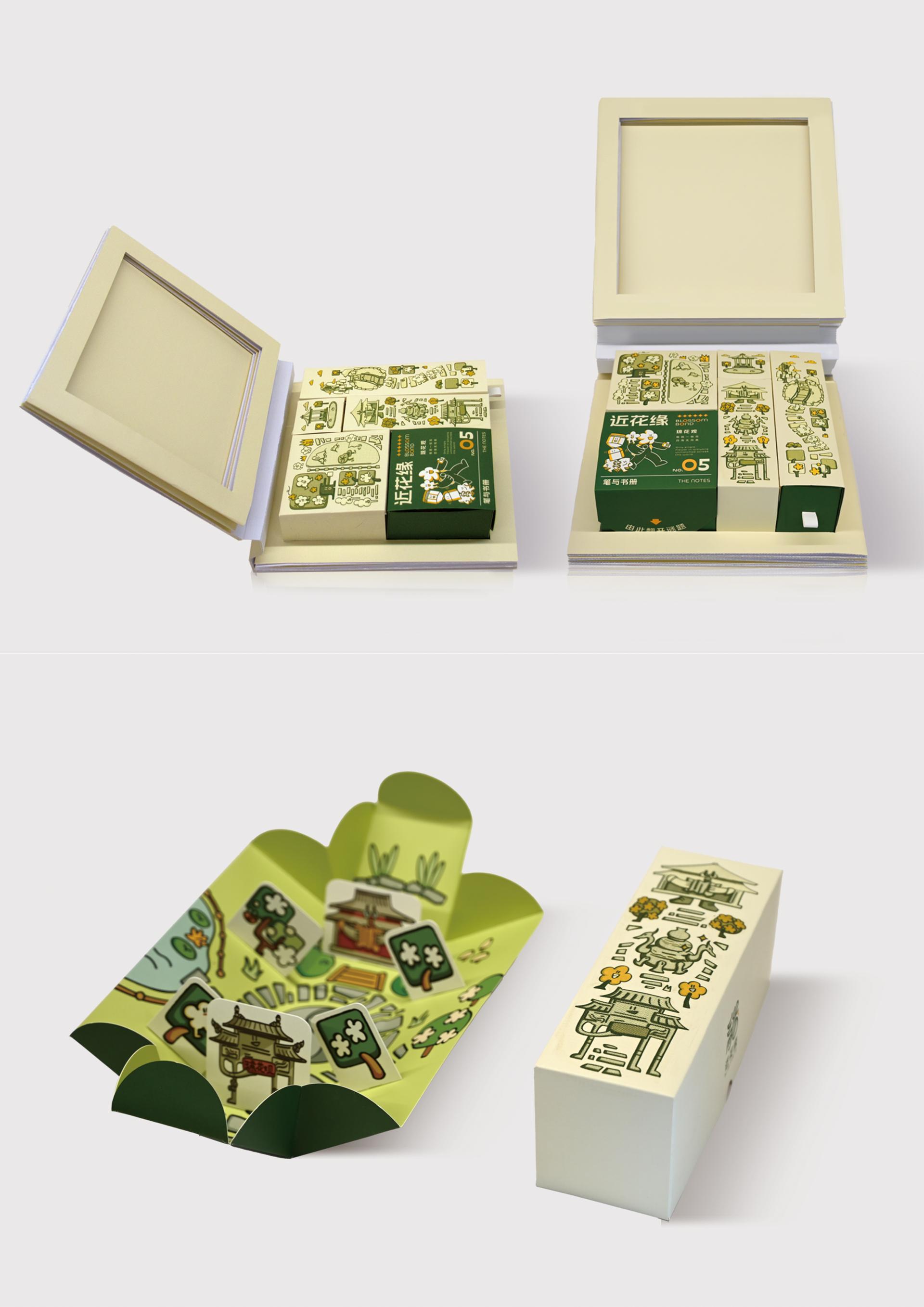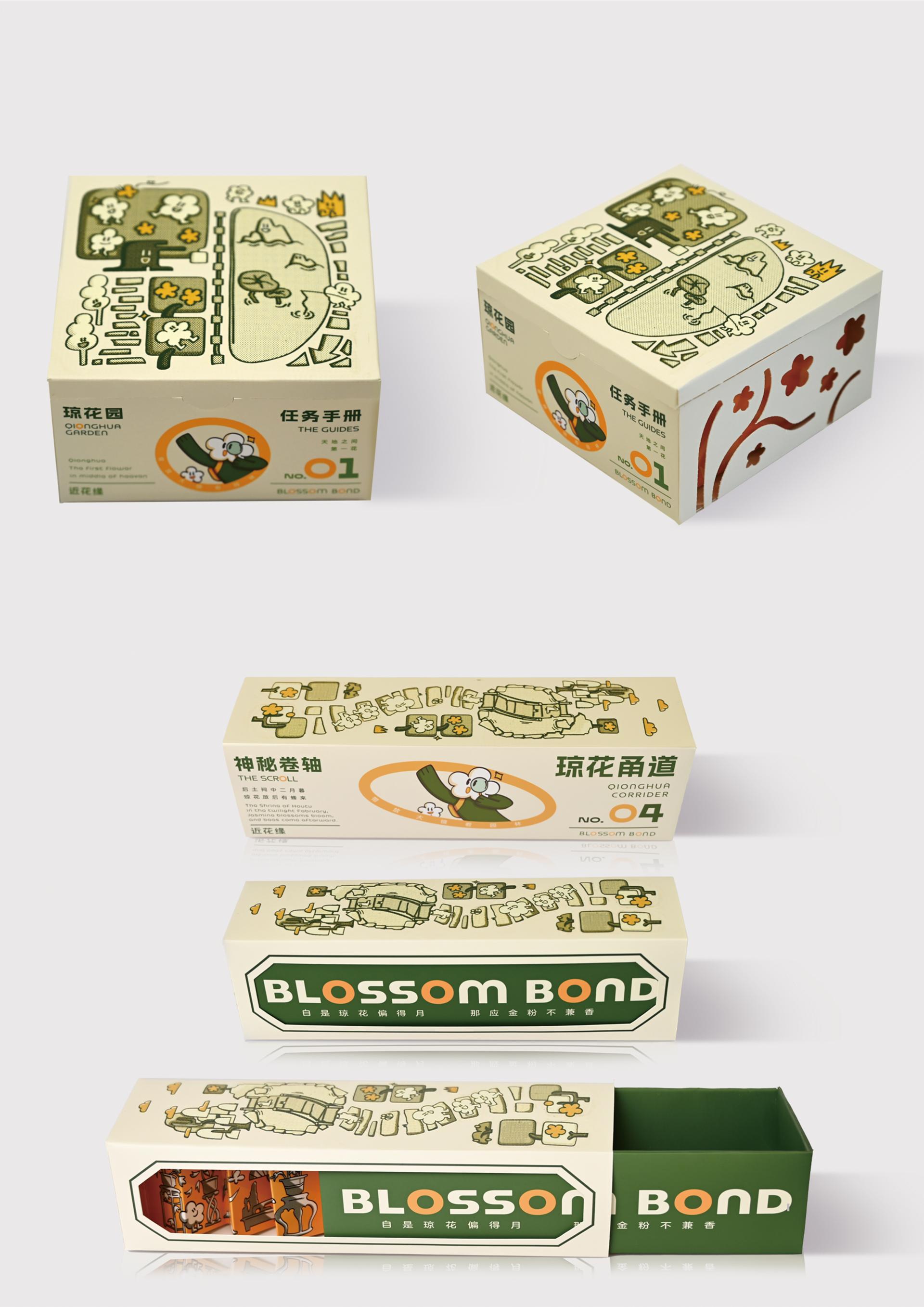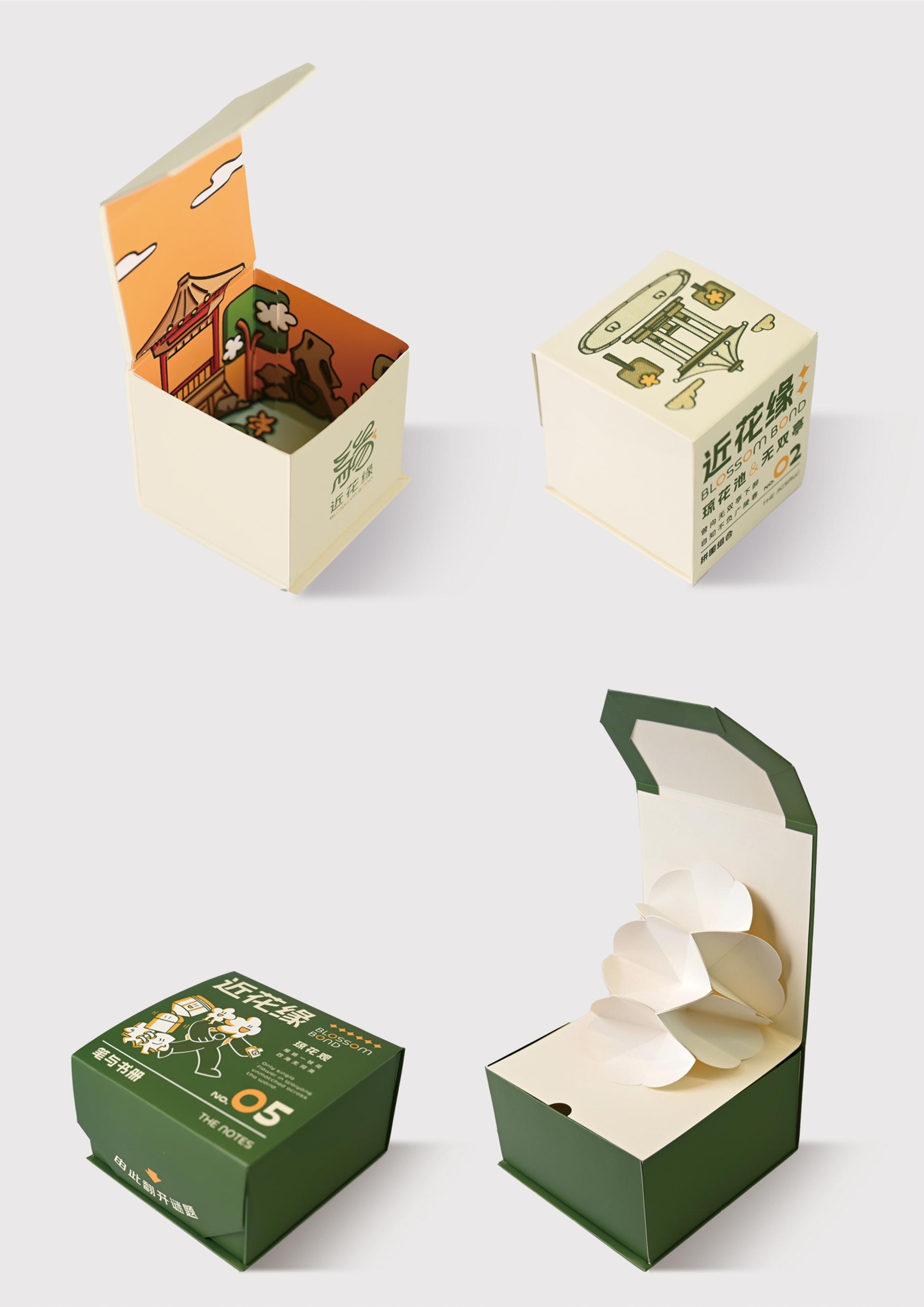2025 | Student

"Blossom Bond"Yangzhou Tourism Puzzle packaging system
Entrant Company
Liyouyu He,Han Zhu
Category
Packaging Design - Games
Client's Name
Yangzhou Cultural and Tourism Department
Country / Region
China
"Blossom Bond"(Jin Hua Yuan,"近花缘“) is an innovative cultural packaging system designed to rejuvenate Yangzhou's historic Qionghua Temple through gamified exploration. Targeting young travelers, this modular packaging transforms traditional garden tourism into a tactile puzzle adventure, blending structural interactivity, cultural storytelling, and sustainable design under the concept "Viewing Gardens Through a Magnifying Glass."
The system features six combinable sub-boxes housed within a corrugated eco-shell with reinforced crash-proof edges and convertible wide straps as handles. Each unit employs distinct opening mechanisms - magnetic closure, tear-activated "blooming" boxes mimicking Qionghua flowers, drawer-style boxes revealing scrolls, and top-bottom boxes - inspired by Huarongdao sliding puzzles and topological layering. These interactive structures physically embody the garden's "step-by-scenery" philosophy while creating progressive narrative reveals.
Reassembled box tops form a collective aerial map of Qionghua Temple, embedded with 3D laser-cut architectural elements (arched gate replicas, miniature bronze tripods) and floral motif illustrations printed on matte-coated white cardstock. A dual-tone color scheme derived from Qionghua leaves (olive-cyan) and blossoms (pearl-white) visually unifies the packaging with the site's botanical identity.
Each box corresponds to key landmarks like the Magnetic Twin Pavilion Unit containing panoramic view decoders. Opening actions trigger narrative clues tied to original IP characters "A-Qiong" and "A-Hua" - youthful gardener guides visualized through ink-wash mascot designs. The sequential unboxing process reconstructs historical anecdotes about Song Dynasty poets and Qing-era rituals, transforming material interactions into time-travel storytelling.
This sustainable design (100% recyclable materials, reusable configurations) pioneers a new model for heritage activation, achieving 83% trial-user approval in youth engagement metrics during pilot testing. By converting cultural assets into handheld exploratoriums, it bridges Ming Dynasty elegance with Gen-Z experiential expectations through engineered wonder.
Credits

Entrant Company
RAY MA
Category
Product Design - Wearable Technologies


Entrant Company
Chen Yu interior decoration Ltd.
Category
Interior Design - Beauty Salon


Entrant Company
HANGZHOU TUOYUE DIGITAL TECHNOLOGY CO.,LTD.
Category
Fashion Design - Footwear


Entrant Company
Shantou Runxinsheng Brand Management Co., Ltd
Category
Fashion Design - Underwear

